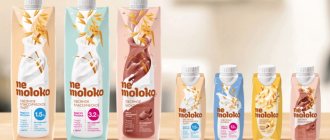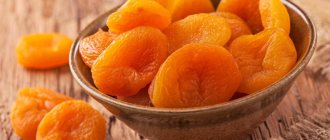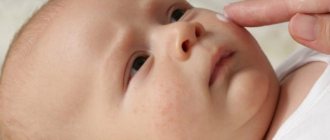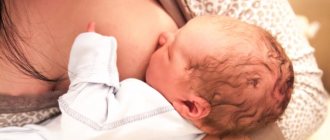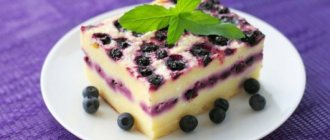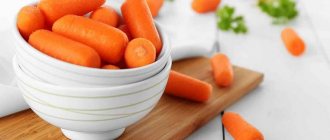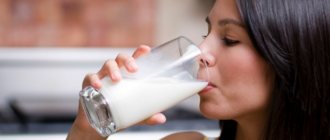When a newborn baby does not have allergies or problems with intestinal function, the young mother can afford whatever she wants (of course, within acceptable limits). But if there is colic and diathesis, a woman will have to limit herself in nutrition - eat only healthy and approved foods and dishes. Which? The undefined section includes cheesecakes for nursing mothers , which in normal times are so readily consumed for breakfast.
Why are cheesecakes included in the section carefully considered during breastfeeding? Almost everyone knows that cottage cheese is useful for children and adults due to the calcium content in its composition. But cottage cheese is a complete protein, which, when combined with eggs and butter, can harm a child’s health, because protein is a powerful allergy sufferer. The baby receives a portion of protein through breast milk and is immediately covered with common diathesis. Why? How to avoid this? What to do if a newborn already has diathesis, but in this case the allergic person is sugar - is it allowed for a young mother to eat cottage cheese?
There are a lot of questions, but even a qualified specialist cannot give accurate answers. The situation is discussed in more detail in the article, which every happy woman with a baby in her arms should read.
What are the benefits of cheesecakes?
Cheesecakes - or cottage cheese as they are also called - provide invaluable benefits due to the large amount of cottage cheese they contain. Of course, after heat treatment, the beneficial substances of the cottage cheese will somewhat reduce their properties.
But basically, the benefits of cheesecakes lie in the following properties:
- cottage cheese prevents fatty liver degeneration;
- the dairy product normalizes and improves the excretion of bile;
- strengthens the nervous system;
- cottage cheese improves metabolic processes;
- cottage cheese saturates the body with phosphorus, calcium, iron and B vitamins;
- improves the baby's intestinal microflora;
- calcium saturation helps strengthen the newborn’s skeleton;
- cottage cheese helps strengthen the child’s nails and hair;
- increases mental and physical abilities.
This is important: Despite the positive effects of cheesecakes on both the health of the young mother and the child, you should consult a doctor before eating them. It is important to exclude the development of diathesis and other troubles due to the consumption of dairy products.
Can a nursing mother eat this dish?
Being a dairy product, cheesecakes contain a lot of calcium, phosphorus and protein, which are necessary for health. In whole milk, the protein is not coagulated, it can provoke allergies, while in cottage cheese, being in a coagulated state, it is easily digested and does not cause an allergic reaction.
During breastfeeding, the body's need for protein, calcium and phosphorus increases, which is why cottage cheese, rich in these substances, is useful for mothers during lactation.
Having a low calorie content, this dairy product promotes weight loss, which is useful if a woman has gained extra pounds during pregnancy.
From what month?
Due to the content of cottage cheese, eggs, flour, and semolina in cheesecakes, it is not recommended to include them early in the diet during lactation.
It should be noted that doctors recommend starting to eat cheesecakes 2-3 months after giving birth.
How is it useful for a woman?
Cheesecakes contain a large amount of cottage cheese, which is their most useful component. Despite the fact that heat treatment affects the amount of nutrients in a given dish, cottage cheese retains most of its beneficial properties:
- improves metabolic processes, including the metabolism of fats in the body;
- due to its low calorie content, it is a dietary product and promotes weight loss;
- helps remove bile from the body;
- helps strengthen the nervous system;
- calcium in its composition strengthens bones, improves the condition of nails and hair;
- iron helps increase hemoglobin in the blood;
- B vitamins improve the functioning of the nervous system and muscle tone.
About the dangers of cheesecakes
Syrniki are a complete dairy product, which mainly consists of cottage cheese. Since the production of cottage cheese is impossible without the use of natural milk, a woman should refuse cheesecakes if her child has an allergy to milk - this is diathesis or more serious skin rashes.
Video
Some efficient women prepare cheesecakes using soy milk. At the same time, they make cottage cheese themselves. But the taste of the product is noticeably different and is not able to satisfy the corresponding needs. It is also necessary to mention the presence of flour in cheesecakes, which even in small quantities can cause constipation in a baby. Flour during breastfeeding may be completely prohibited - any flour products are prohibited. To minimize the harm that can be caused to a child, it is better to use first-grade wheat flour during cooking. The highest grade is also prohibited for use, since it often contains “bleach”.
This is important: Never buy ready-made cheesecakes purchased frozen in supermarkets. This can seriously harm the child, since during their production various additives and flavor enhancers are used - this will provoke the development of allergies in the child. In addition, expired cottage cheese is often used in production.
How to cook cheesecakes
So, from the above there follows an affirmative answer to the question of whether cheesecake made from cottage cheese is possible during breastfeeding. Cottage cheese is allowed, but only if the baby is not allergic to dairy products and eggs - to protein. Allergies do not always manifest themselves as a banal diathesis; you can also encounter more serious problems in the form of skin rashes or an attack of suffocation. Therefore, it is allowed to eat only cottage cheese pancakes prepared independently. The recipe for approved cheesecakes will be given below.
An important fact is the mandatory absence of vegetable oil during the frying process.
- Firstly , a woman in the first months after the birth of a baby should give up fatty foods, as this negatively affects lactation.
- Secondly , vegetable oil brought to a boil contains a large number of carcinogens - this is harmful not only to a newborn child, but also to adults. Cottage cheese absorbs vegetable oil quite strongly; one cheesecake can contain up to 2 tablespoons of the product.
- Thirdly , the produced carcinogens have a destructive effect on internal organs, the liver suffers the most. For a newborn, this can turn into a serious problem.
Summing up, it becomes clear that cheesecakes can be steamed or fried without vegetable oil. And since frying without oil will not work (the curds will simply burn), it is recommended to bake them in the oven on special baking paper.
Recipes for new mothers
There are a huge number of all kinds of recipes intended for preparing dishes for young mothers. Their differences are in the composition and method of preparation.
Steamed cheesecakes
The recipe is simple, but they can be prepared in different ways. It is recommended to steam cheesecakes for those women who actively monitor their weight after the birth of a child.
To prepare steamed cheesecakes, it is recommended to use the standard recipe:
- Mix 400 g of cottage cheese with one egg.
- Stir in 3 tablespoons of sugar and mix everything thoroughly. You can add raisins or chopped dried fruits.
- Add about 3-4 tablespoons of flour to the contents - watch the consistency. It is important to achieve an elastic “dough” so that you can make a cheesecake.
- If desired, you can add baking powder to the mixture - no more than a teaspoon.
- Form cheesecakes and place in a steamer. Additionally, the mold can be greased with flour.
- Cook the curds for no more than 20-30 minutes.
Ready-made cheesecakes may be served with sour cream and other additives allowed for a young mother while breastfeeding.
Video
Cheesecakes in a frying pan
The recipe presented above can be used to prepare cheesecakes in a frying pan. Only here you will have to add a tablespoon of sour cream to the composition, and, therefore, increase the amount of flour added. Fry the cheesecakes in a frying pan without oil, but with a lid. You can also fry the cheesecakes in a slow cooker - you will get a neat and appetizing golden crust.
Cheesecakes in the oven
There is a rather interesting recipe for cheesecakes in the oven for a nursing mother. The oven allows you to add various fruits to the curd recipe - bananas, apples and others allowed during breastfeeding.
For example, here is a recipe for cheesecakes with apples:
- Add one egg, a pinch of soda, and sugar to taste to 400 g of cottage cheese. Mix everything.
- Prepare the apples - you can grate them and simply add them to the mixture. You can also take advantage of the slightly difficult formation of curds - peel the apples and cut the pulp into cubes. During the formation process, apples are placed inside the curd mass. The given mass will require only 2 apples.
- Grated apples are mixed into the mixture.
- Now add flour to the curd-apple mixture - you will need about 3-4 tablespoons. You may need more flour - it is important to make a mixture from which you can later make curds.
- Leave the mixture for half an hour. After time has passed, place the formed cheesecakes on a baking sheet previously covered with parchment. You can sprinkle with breadcrumbs or flour.
- Place in the oven for half an hour at a temperature of 180-200 degrees.
You can serve ready-made cheesecakes with sour cream or a little honey if your child is not allergic to sweets.
Video
Is cottage cheese in cheesecakes beneficial or harmful for a nursing mother?
Why are cheesecakes called cheesecakes and not cottage cheese?
In Old Russian and other Slavic languages there was no division between the concepts of “cheese” and “cottage cheese”. So both were called cheeses. In the English-speaking tradition, cottage cheese is still a type of young cheese. Therefore, if you find recipes for cottage cheesecakes somewhere, you can say that these are the same cheesecakes, but with a more modern name. All recipes for cheesecakes and curds have one thing in common - the main component is cottage cheese, or “young cheese”. Cottage cheese, like all dairy products, is a natural source of protein, calcium, and phosphorus. But unlike milk, its protein is in a coagulated state, which makes it easier to digest and does not cause an allergic reaction to foreign protein, unlike the protein of whole cow's milk. Calcium is also easily absorbed from it. This fermented milk product has an optimal ratio of calcium and phosphorus, which is of great importance in building a strong skeletal system.
For a nursing mother, cottage cheese in the diet will not be superfluous, because during breastfeeding the need for calcium, phosphorus, and protein increases. But only a few love it in its pure form, and here various recipes for delicious dishes made from it come to the rescue. Cottage cheese is also useful for nursing mothers struggling with excess weight.
Not only is it low in calories and high in nutritional value, but it also helps improve fat metabolism in the body.
But no matter how many useful substances cottage cheese contains, it is unlikely to be able to meet the daily needs of a nursing mother with its help. For example, to satisfy the need for animal protein (72 g) one would have to eat 450 grams of cottage cheese, calcium (1500–1800 mg) - 1.25 kg, phosphorus (3500 mg) - 1.9 kg! Therefore, you should be aware that by making cheesecakes from two packs of cottage cheese, you will be able to provide yourself and your child with only animal protein, the share of which in the total protein intake should be 50–60%. The remaining proteins and microelements must be obtained from plant foods.
Therefore, a nursing mother’s diet should be varied and balanced, primarily in the interests of her own health.
If you rely on cottage cheese as the main supplier of calcium and are able to consume a kilogram of this product in a day, then be careful. This product has a pronounced diuretic effect, removing excess fluid from the body. Suitable for combating edema, but not so good for breastfeeding. We are talking about excessive consumption of cottage cheese as food; 300–500 grams per day will not harm lactation and the mother. Plus, increased consumption of animal protein above the norm leads to a deterioration in the absorption of calcium and its removal from the body by the kidneys, in which an excess of this mineral can provoke the deposition of stones. So everything useful is useful, but in moderation.
Read also:
Which nuts are best for breastfeeding and what are their dangers?
Another catch in industrially produced cottage cheese is the long expiration dates indicated on the packaging. This means that in its manufacture either heat treatment or the use of “food” additives with preservative properties were used. Many of them easily pass into breast milk and very often they cause allergies in infants. Cottage cheese is a perishable product and its shelf life at a temperature not exceeding 8°C is only 2 days.
For recipes that require heat treatment, such as when making cheesecakes, you can use such a two-day product, but for eating raw it is better to refrain.
If you are not sure of the quality of purchased cottage cheese, then you can use a homemade product to prepare cheesecakes according to any recipe. A very simple way to prepare tender and fresh cottage cheese is to take kefir in a bag and freeze it in the freezer of the refrigerator. Then put gauze or any clean cotton cloth on a colander, remove the frozen product and put it in the colander. The whey will drain, and the cottage cheese will remain in the colander, which you need to squeeze out a little and start making cheesecakes!
Recommendations for use
A young mother must carefully monitor her diet, so the considered cottage cheese dish is consumed taking into account the following recommendations:
- Cottage cheese in large quantities is allowed to a nursing mother only 2-3 months after the birth of the child.
- You should first check the baby’s body’s reaction to cottage cheese - after eating the cheesecake, take a break of 2 days and monitor the baby’s behavior and condition.
- A dish of cottage cheese is allowed to be consumed only twice a week, each time no more than 100 g.
- At first, only “pure” cottage cheese is allowed. You can later add fruits and dried fruits.
- Don’t be afraid to mix cottage cheese with carrots, cauliflower and white cabbage - this is the best alternative for a young mother if her child is allergic to fruit.
- Keep an eye on the expiration date of products - flour, eggs, and even more so cottage cheese, have a limited shelf life.
This is important: If a child has a reaction to consumed curds, the young mother should immediately consult a doctor. Intestinal disorders can lead to dehydration of the baby’s body, and this is fraught with more serious disturbances in the functioning of the baby’s internal organs.
Cottage cheese, cheesecakes or cottage cheese pancakes are certainly useful for a young mother, but they should be avoided if the baby has allergies. If this is not observed, the young mother can relax and introduce cottage cheese and dishes containing it into her diet in small quantities. You should not neglect the recommendations of specialists, otherwise you can harm not only the baby, but also yourself. Eat only healthy and safe foods and dishes.
Recipe for cottage cheese pancakes in the oven for GW. Calorie, chemical composition and nutritional value.
Nutritional value and chemical composition of “Curd cheese pancakes in the oven for GW.”
The table shows the nutritional content (calories, proteins, fats, carbohydrates, vitamins and minerals) per 100 grams of edible portion.
| Nutrient | Quantity | Norm** | % of the norm in 100 g | % of the norm in 100 kcal | 100% normal |
| Calorie content | 120.6 kcal | 1684 kcal | 7.2% | 6% | 1396 g |
| Squirrels | 13.2 g | 76 g | 17.4% | 14.4% | 576 g |
| Fats | 3 g | 56 g | 5.4% | 4.5% | 1867 |
| Carbohydrates | 10.1 g | 219 g | 4.6% | 3.8% | 2168 g |
| Organic acids | 0.1 g | ~ | |||
| Alimentary fiber | 0.7 g | 20 g | 3.5% | 2.9% | 2857 g |
| Water | 27.1 g | 2273 g | 1.2% | 1% | 8387 g |
| Ash | 0.347 g | ~ | |||
| Vitamins | |||||
| Vitamin A, RE | 55.8 mcg | 900 mcg | 6.2% | 5.1% | 1613 g |
| Retinol | 0.048 mg | ~ | |||
| beta carotene | 0.016 mg | 5 mg | 0.3% | 0.2% | 31250 g |
| Vitamin B1, thiamine | 0.032 mg | 1.5 mg | 2.1% | 1.7% | 4688 g |
| Vitamin B2, riboflavin | 0.1 mg | 1.8 mg | 5.6% | 4.6% | 1800 g |
| Vitamin B4, choline | 59.1 mg | 500 mg | 11.8% | 9.8% | 846 g |
| Vitamin B5, pantothenic | 0.322 mg | 5 mg | 6.4% | 5.3% | 1553 g |
| Vitamin B6, pyridoxine | 0.063 mg | 2 mg | 3.2% | 2.7% | 3175 g |
| Vitamin B9, folates | 4.954 mcg | 400 mcg | 1.2% | 1% | 8074 g |
| Vitamin B12, cobalamin | 0.11 mcg | 3 mcg | 3.7% | 3.1% | 2727 g |
| Vitamin C, ascorbic acid | 0.61 mg | 90 mg | 0.7% | 0.6% | 14754 g |
| Vitamin D, calciferol | 0.465 mcg | 10 mcg | 4.7% | 3.9% | 2151 g |
| Vitamin E, alpha tocopherol, TE | 0.335 mg | 15 mg | 2.2% | 1.8% | 4478 g |
| Vitamin H, biotin | 4.556 mcg | 50 mcg | 9.1% | 7.5% | 1097 g |
| Vitamin K, phylloquinone | 0.4 mcg | 120 mcg | 0.3% | 0.2% | 30000 g |
| Vitamin RR, NE | 1.1562 mg | 20 mg | 5.8% | 4.8% | 1730 g |
| Niacin | 0.204 mg | ~ | |||
| Macronutrients | |||||
| Potassium, K | 89.81 mg | 2500 mg | 3.6% | 3% | 2784 g |
| Calcium, Ca | 16.38 mg | 1000 mg | 1.6% | 1.3% | 6105 g |
| Silicon, Si | 0.462 mg | 30 mg | 1.5% | 1.2% | 6494 g |
| Magnesium, Mg | 5.84 mg | 400 mg | 1.5% | 1.2% | 6849 g |
| Sodium, Na | 32.91 mg | 1300 mg | 2.5% | 2.1% | 3950 g |
| Sera, S | 46.17 mg | 1000 mg | 4.6% | 3.8% | 2166 g |
| Phosphorus, P | 52.1 mg | 800 mg | 6.5% | 5.4% | 1536 g |
| Chlorine, Cl | 35.65 mg | 2300 mg | 1.6% | 1.3% | 6452 g |
| Microelements | |||||
| Aluminium, Al | 140.2 mcg | ~ | |||
| Bor, B | 46.7 mcg | ~ | |||
| Vanadium, V | 11.08 mcg | ~ | |||
| Iron, Fe | 1.036 mg | 18 mg | 5.8% | 4.8% | 1737 |
| Yod, I | 4.75 mcg | 150 mcg | 3.2% | 2.7% | 3158 g |
| Cobalt, Co | 2.473 mcg | 10 mcg | 24.7% | 20.5% | 404 g |
| Manganese, Mn | 0.0806 mg | 2 mg | 4% | 3.3% | 2481 g |
| Copper, Cu | 48.13 mcg | 1000 mcg | 4.8% | 4% | 2078 g |
| Molybdenum, Mo | 3.75 mcg | 70 mcg | 5.4% | 4.5% | 1867 |
| Nickel, Ni | 3.196 mcg | ~ | |||
| Tin, Sn | 0.6 mcg | ~ | |||
| Rubidium, Rb | 10.9 mcg | ~ | |||
| Selenium, Se | 7.45 mcg | 55 mcg | 13.5% | 11.2% | 738 g |
| Titanium, Ti | 1.27 mcg | ~ | |||
| Fluorine, F | 15.56 mcg | 4000 mcg | 0.4% | 0.3% | 25707 g |
| Chromium, Cr | 1.79 mcg | 50 mcg | 3.6% | 3% | 2793 g |
| Zinc, Zn | 0.3415 mg | 12 mg | 2.8% | 2.3% | 3514 g |
| Digestible carbohydrates | |||||
| Starch and dextrins | 7.652 g | ~ | |||
| Mono- and disaccharides (sugars) | 1.7 g | max 100 g | |||
| Glucose (dextrose) | 0.346 g | ~ | |||
| Sucrose | 0.26 g | ~ | |||
| Fructose | 0.952 g | ~ | |||
| Essential amino acids | 0.015 g | ~ | |||
| Arginine* | 0.169 g | ~ | |||
| Valin | 0.165 g | ~ | |||
| Histidine* | 0.073 g | ~ | |||
| Isoleucine | 0.129 g | ~ | |||
| Leucine | 0.232 g | ~ | |||
| Lysine | 0.193 g | ~ | |||
| Methionine | 0.089 g | ~ | |||
| Methionine + Cysteine | 0.154 g | ~ | |||
| Threonine | 0.131 g | ~ | |||
| Tryptophan | 0.043 g | ~ | |||
| Phenylalanine | 0.139 g | ~ | |||
| Phenylalanine+Tyrosine | 0.243 g | ~ | |||
| Nonessential amino acids | 0.036 g | ~ | |||
| Alanin | 0.153 g | ~ | |||
| Aspartic acid | 0.274 g | ~ | |||
| Glycine | 0.091 g | ~ | |||
| Glutamic acid | 0.382 g | ~ | |||
| Proline | 0.087 g | ~ | |||
| Serin | 0.199 g | ~ | |||
| Tyrosine | 0.103 g | ~ | |||
| Cysteine | 0.062 g | ~ | |||
| Sterols (sterols) | |||||
| Cholesterol | 120.58 mg | max 300 mg | |||
| Saturated fatty acids | |||||
| Saturated fatty acids | 0.7 g | max 18.7 g | |||
| 14:0 Miristinovaya | 0.008 g | ~ | |||
| 15:0 Pentadecane | 0.002 g | ~ | |||
| 16:0 Palmitinaya | 0.434 g | ~ | |||
| 17:0 Margarine | 0.006 g | ~ | |||
| 18:0 Stearic | 0.186 g | ~ | |||
| 20:0 Arakhinovaya | 0.006 g | ~ | |||
| Monounsaturated fatty acids | 1.051 g | min 16.8 g | 6.3% | 5.2% | |
| 16:1 Palmitoleic | 0.083 g | ~ | |||
| 17:1 Heptadecene | 0.002 g | ~ | |||
| 18:1 Oleic (omega-9) | 0.865 g | ~ | |||
| 20:1 Gadoleic (omega-9) | 0.008 g | ~ | |||
| Polyunsaturated fatty acids | 0.267 g | from 11.2 to 20.6 g | 2.4% | 2% | |
| 18:2 Linolevaya | 0.233 g | ~ | |||
| 18:3 Linolenic | 0.013 g | ~ | |||
| 20:4 Arachidonic | 0.021 g | ~ | |||
| Omega-6 fatty acids | 0.3 g | from 4.7 to 16.8 g | 6.4% | 5.3% |
The energy value of cottage cheese pancakes in the oven for GW is 120.6 kcal.
Primary Source: Created in the application by the user. Read more.
** This table shows the average levels of vitamins and minerals for an adult. If you want to know the norms taking into account your gender, age and other factors, then use the “My Healthy Diet” application.
